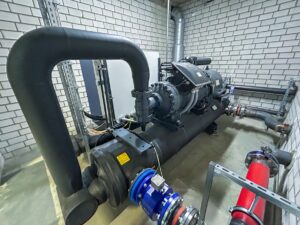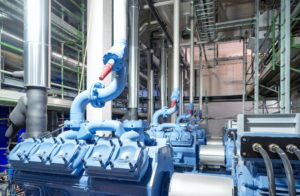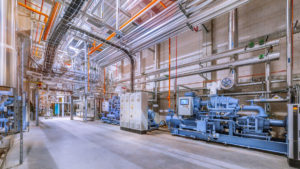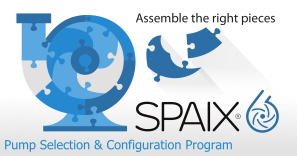With Wilo Pumps Towards a CO2-neutral Energy Concept
"Klimahaus Bremerhaven 8° Ost", which opened in June 2009, had a quite broad range of requirements to state-of-the-art pump technology. The experimental centre presents the visitors data, facts and phenomena about global climate processes and climate change and simulates them with large technical effort.
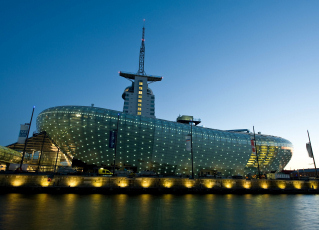
Klimahaus Bremerhaven (Photo: Wilo)
The best example is the area "Journey" which alone consists of 4800 m². Here, different climate zones along the 8th east longitude are made perceivable for all senses by using intelligent air-conditioning, sprinkling or icing as well as typical odours and noises. In this area temperatures ranging from -6°C up to +35°C are required because the stations are e.g., Antarctica, the dwindling glaciers of Switzerland, a fringing reef with live corals and exotic fishes as well as Niger with its dry heat.
Due to the Klimahaus’ quite ambitious objective, also in ecological terms, sustainability and a possibly CO2-neutral energy concept had already been in the focus when the building was planned and built. This was a big challenge for the planners of Transsolar Energietechnik GmbH because not only the required atmospheric conditions must be guaranteed, but also a good quality of fresh air for up to 5,000 visitors a day. They developed a holistic and cross-trade overall concept involving building services, heating and air-conditioning technology, aiming to prepare all buildings parts as simply and efficiently as possible for air-conditioning. For this reason, 49 pumps and pump systems of the Dortmund-based pump expert WILO SE are applied which decisively contribute to providing perfect basic conditions in every climate zone with quite low electricity consumption.
Climate-friendly generation and distribution of heat
Heat is supplied practically a CO2-neutral way via district heating which is generated in the Bremerhaven waste-to-energy plant. In order to protect the climate also in heat distribution, only electronically controlled "Wilo-VeroLine-IP-E" glanded pumps and high-efficiency pumps of the "Wilo-Stratos" series are applied. These pumps adjust their speed to the alternating load of the system or the respective heating circuit so that they consume significantly less electricity than uncontrolled pumps. With the "Wilo-Stratos", electricity and CO2 savings of up to 80% can be achieved.
In those parts of the system with large volume flows "Wilo-VeroLine-IP-E" glanded pumps were installed. So two pumps of this series are the main pumps installed between the transmission station for district heating and the heating circuit distributors. They are operated as a base-load or a peak-load pump. This set-up as well as a power-saving speed control of the pumps ensure that only the heat quantity that is actually required by the system is delivered.
"Wilo-Stratos" high-efficiency pumps are to be found in the downstream heating circuits with smaller volume flows. Wherever operating and supply safety require it, double pumps of the "Wilo-Stratos-D" series were installed like, for example, in the heating circuit which supplies the heat exchangers of the aquariums in the exhibition. Having the sensitive marine life in mind, heat supply must not be interrupted neither in the event of a pump fault. Therefore the pumps are arranged redundantly. One of the pumps acts as the main pump, whereas the second is available as the standby pump. In order to achieve an equal load of the pumps, the main and the standby pump alternate during certain temporal intervals via the integrated dual pump management.
Cooling the building with environmental energy
A special challenge was to realise air-conditioning which uses as little primary energy as possible. Its utilisation permanently requires cooling energy and this also exceeds the heat demand. Therefore the planners decided to use natural resources and environmental energy for cooling the building wherever it is possible.
One aspect is the concrete core cooling which uses the storage capacity of the massive ceilings for controlling the room temperature. As long as the outdoor temperatures allow for it, the cold water required is generated by means of free cooling via a cooling tower on the roof of the Klimahaus. Alternatively the cooling circuits can also be fed via geothermal energy which is close to the surface. Therefore, one part of the building s truss is designed as an energy pile field with a peak cooling power of 270 kW.
Both systems feed a distribution with four circuits for air-conditioning cooling water. One of them is for concrete core cooling and is supplied by a "Wilo-CronoLine-IL 32/150-2,2/2" low-pressure centrifugal pump. Circulating air cooling units, cooling ceilings or the floor cooling in the foyer are connected to the other three circuits as consumers. As alternating operating condition dominate here, electronically controlled glanded pumps of the "Wilo-VeroLine-IP-E" series and a "Wilo-VeroTwin-DP-E" double pump were installed. In most cases, the more economical partial load operating mode of the pumps is quite sufficient. It allows for energy savings of up to 50% compared to uncontrolled pumps.
Redundant pumps prevent "thawing" in Antarctica
Virtually "icy" conditions have to be guaranteed all year round in the "Antarctica" exhibition area. Here, the floor and the walls are covered with real ice, the temperature is at –6°C. Since a malfunction or a breakdown would cause immediate thawing in Antarctica, all essential components are installed redundantly. These are, besides the fan coil and the refrigerating machine, also the circulation pumps in the consumer string. Here, two identical "Wilo-CronoBloc-BL" pumps as main and standby pump were installed. They supply the fan coil and the air-conditioning system of the "Antarctica" as well as the cooling of the ice exhibits. Thus, in the event of a pump malfunction the freezing of the concerned system part is safely prevented.
A "Wilo-Comfort-Vario COR-3 MVIE 808/VR-WMS" pressure boosting system is applied for the supply of the sanitary facilities for visitors and the staff. It is equipped with an intelligent VR control unit ("Vario controller") which allows the control of the frequency converters which are integrated into the pump electronics. So a demand-oriented and efficient operation of the system is achieved.
Another request of the client was to use rainwater as well. It is caught on the Klimahaus roof and stored in a rainwater storage tank. From there it flows into a "Wilo-RainSystem AF 400-805 DM/RCH" rainwater utilisation system which supplies the toilets and urinals in one part of the toilets for visitors via a separate water pipe. It has a tank volume of 400 l and is equipped with two vertical centrifugal pumps which have a volume flow of 8 m³/h at an optimum efficiency. So a reliable supply of the connected sanitary facilities is guaranteed also when they are frequently used.
Source: WILO SE

